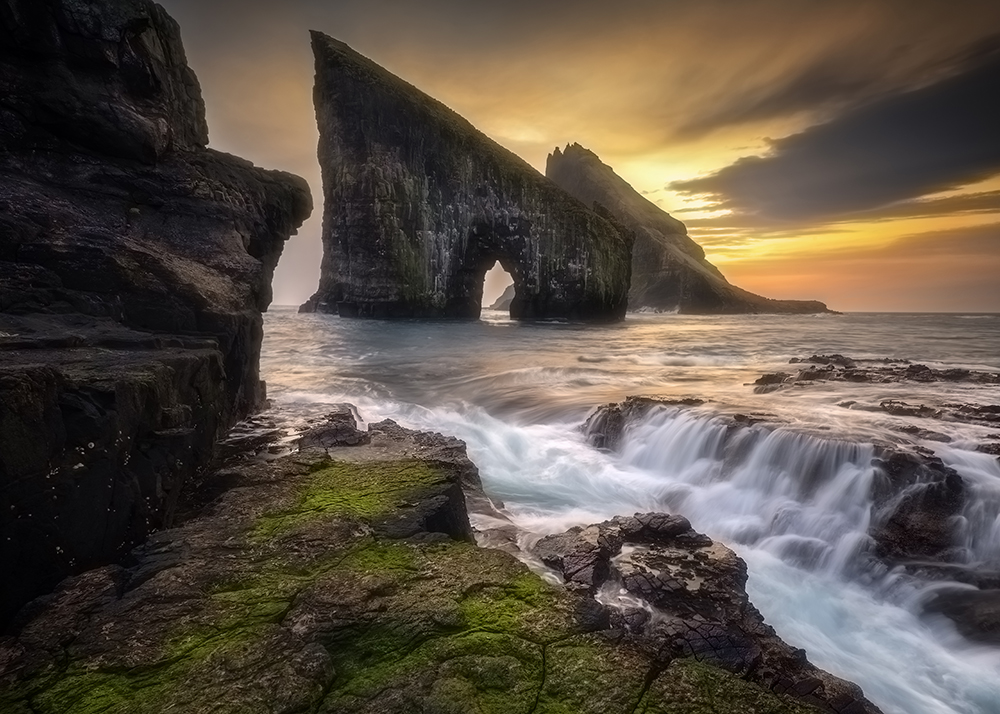Pawel Zymunt shares his shots of land that's so near and yet so Faroe
Photographer Pawel Zygmunt documents the epic scenery and wild weather of his visits to the Faroe Islands

It was always my dream to visit the Faroe Islands. Their spectacular landscape and unpredictable weather is something that every landscape photographer aspires to shoot. I remember watching YouTube vlogs from photographers and I fell in love with this place. Some call it the last secret of Europe. Well, it’s not so secret anymore, as the popularity of this place grows every year, bringing tourists and photographers from all around the world.
The weather on the Faroe Islands is unpredictable. Often you’ll experience four seasons within one hour! It could be raining in one place and the sun shining 30 minutes’ drive away. For that reason it’s crucial to pack plenty of wet weather gear and spare clothes, plus hats and gloves.
When I visited the Faroes at the end of April 2019 I was surprised by colourful sunrises and sunsets, which are not typical for the islands. Thanks to long days I was able to cover all the most interesting spots.
Second time’s a charm
My second visit, in January 2020, was different; I experienced the worst weather of my life. Rain and gusting wind was my companion for almost the whole week. However, the rain and super-strong winds provided a moody atmosphere. I was forced to shoot mostly handheld due to the strength of the wind.
At times, the extreme weather was dangerous. I experienced gale-force winds of 120kph or more; try to imagine how it would be on the edges of cliffs or on top of mountains in such bad weather.
But despite the fact that I produced more photos during my spring 2019 visit, I enjoyed the winter 2020 trip more, mostly because the dramatic conditions and moodiness really reflect the character of the rugged islands. The only thing I would change about this visit would be postponing my trip to the end of February, which would have given me more daylight and so more chances to shoot.
During both of the visits I was trying to cover as many islands as I could, but it is not really possible to do in only two weeks. Of the 18 islands I managed to photograph 10, and I barely scratched the surface. I was looking to capture everything the Faroes have to offer, including its cliffs, mountains, lakes and waterfalls. YouTube helped me to get to know the place to a degree and the rest I researched on Google Earth.
The best camera deals, reviews, product advice, and unmissable photography news, direct to your inbox!
My shooting kit is a Nikon D810 with a Nikon 16-35mm f/4 lens for big vistas. I also have a Sigma 24-70mm f/2.8 for general-purpose shooting and Sigma 100-400mm f/5-6.3 telephoto zoom. I used a LEE 0.9 graduated filter and, sometimes, a LEE Little Stopper, when the weather allowed. Most of my shots were taken with the aid of a Manfrotto 055 X-Pro 3 tripod, except for my January 2020 journey when, due to the wind, I was forced to shoot handheld.
See more of Pawel Zygmunt’s outstanding images from his travels, as well as his blog about his visits to the Faroe Islands.
Read more:
Best Nikon cameras
Best travel cameras in 2021
Best travel tripod
N-Photo: The Nikon Magazine is a monthly publication that's entirely dedicated to Nikon users. For the best news, reviews, projects and more, subscribe to N-Photo today!

Prior to joining digitalcameraworld.com as Guides Editor, Adam was the editor of N-Photo: The Nikon Magazine for seven years, and as such is one of Digital Camera World's leading experts when it comes to all things Nikon-related.
Whether it’s reviews and hands-on tests of the latest Nikon cameras and lenses, sharing his skills using filters, tripods, lighting, L brackets and other photography equipment, or trading tips and techniques on shooting landscapes, wildlife and almost any genre of photography, Adam is always on hand to provide his insights.
Prior to his tenure on N-Photo, Adam was also a veteran of publications such as PhotoPlus: The Canon Magazine, so his wealth of photographic knowledge isn’t solely limited to the Big N.





